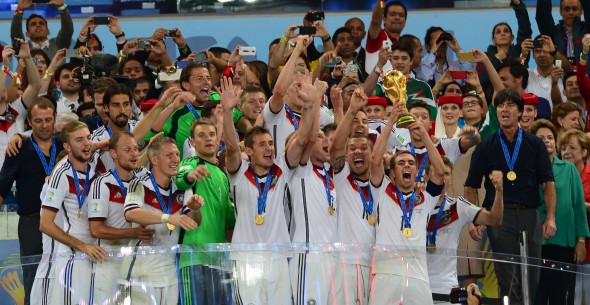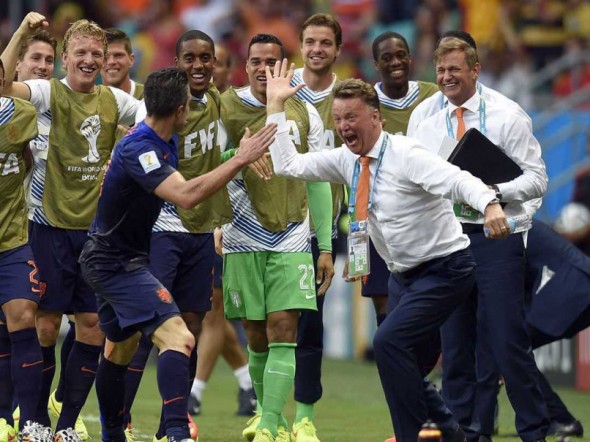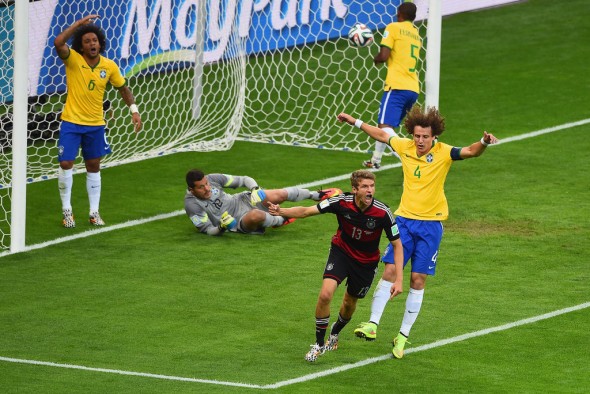
Within minutes of the final whistle sounding Spain’s victory at Euro 2008, achieved via a ruthless brand of possession football laced with purposeful attacks, managers and coaches began scrabbling for the chalkboard.
Football is cyclical; a copy-cat sport. In the same fashion NFL teams are observing the Seattle Seahawks’ “Legion of Boom” with a furrowed brow and wisp of intrigue, football managers constantly look to replicate that winning formula and develop it ever further.
The lessons from Euro 2008 were simple: possession-based football mixed with incisive attacks led to near-certain victory. Luis Aragones’ 4-4-2/4-3-3, utilising one holding midfielder, three creators and two attackers shaped the next half-decade of football.
Six years on we’re obsessed with possession, but the FIFA World Cup 2014—among other events—has shown having the ball isn’t that important.
Perhaps at first they were just anomalies: Jupp Heynckes’ Bayern Munich (2013) played a very different brand of football to what we’d become accustomed to, ripping the possession-based rulebook to shreds with a physically dominant, zonal method of playing.
Real Madrid’s irresistible performance against Pep Guardiola’s tiki-taka-inspired Bayern this year in the Champions League sounded the death knells for Xavi’s bread and butter, yet opened up huge potential for another at the same time.
Now, we’re seeing it on the world’s biggest stage.
The statistics make for galling reading if you’re a coach whose “brand” is to keep the ball. According to WhoScored.com, Spain, Italy, England, Ivory Coast and Japan averaged some of the most possession over the course of their three games.
Each of those teams exited at the group stage, while two other high scorers—Germany (63.2 percent) and Argentina (65.1 percent)—really struggled to get going initially despite eventually contesting the final (after changing styles!).
Lionel Messi bailed La Albiceleste out four times in a row and once his magic wore off, his team fell. Meanwhile, Die Mannschaft turned instead to Sami Khedira’s power running and Toni Kroos’ delightful positioning instead of pass-and-move. They even cut their average possession time down from 3.4 to 1.1 seconds.

@AFP
At the far end of the scale, Algeria (39.6 percent), Costa Rica (41.9 percent), Netherlands (43.7 percent) and Colombia (45.9 percent) were some of the most entertaining, ruthless and successful sides on show in Brazil.
If there’s a tactical theme to emerge from this competition other than the rise of the three-man defence, it’s the obvious fact that counterattacking teams have been the best by far.
Colombia had just 48 percent possession against Greece in their opener, choosing to play incisive, attacking football and look to expose their opponents’ weaknesses quickly.
That meant feeding the ball to Juan Cuadrado and letting him take risks, and within minutes he’d pinpointed the Piratiko’s weakness—Jose Holebas’ (lack of) defensive ability—turned him inside out and fired a cross over for Pablo Armero to convert.
Without the preoccupation of keeping the ball, los Cafeteros sniffed out an opening, explored it and prospered. They won the game comfortably, scoring twice more later on.
The Dutch did the same in pairing Arjen Robben and Robin van Persie up against Spain’s centre-backs one vs. one; France then played Karim Benzema in the space behind Stephan Lichtsteiner and had an easy time making quick ground down the left.
Conversely, Nigeria’s ponderous possession saw them unable to break down a stubborn Iranian defence, while Belgium have monopolised the ball throughout but struggled mightily to make their “dominance” count.

These aren’t coincidences: possession has not been paying off in Brazil, and the rise of transition-based football has taken a stranglehold over the sport.
The 2014 edition matched the 171-goal record set in France 1998 and it’s no surprise why. The flurry is sourced from the quality, incisive play on offer, and that in turn is sourced in the riskier approach many national coaches are taking.
International football is no longer a place in which 4-2-3-1 possession-based football reigns supreme, the pace of the game is slowed and the most careful team wins.
Furious, attacking football—starting from the counterattack and then evolving into its own stylistic preference—has seen the poverty gap between the “top” teams and the “rest” shrink dramatically.
It’s a more level playing field and the real stars have been shining, not bottled up amidst two banks of four, searching for a way out with a torch and a map.
World Cups are the pinnacle of the globe’s biggest, greatest sport and trends that take off in the 30 days are likely to be copied. Transition-based football will soon be the desire of every manager’s heart, and this summer we’ll see quick, mobile playmakers changing hands for big fees as formulas are set.
The question, then, becomes how to stop it. You look at Jose Mourinho’s Chelsea, who defend with six and attacking with (maximum) four at all times, utilising speed on the break and dribbling into space, and wonder whether it’s a more bleak future beckoning.









